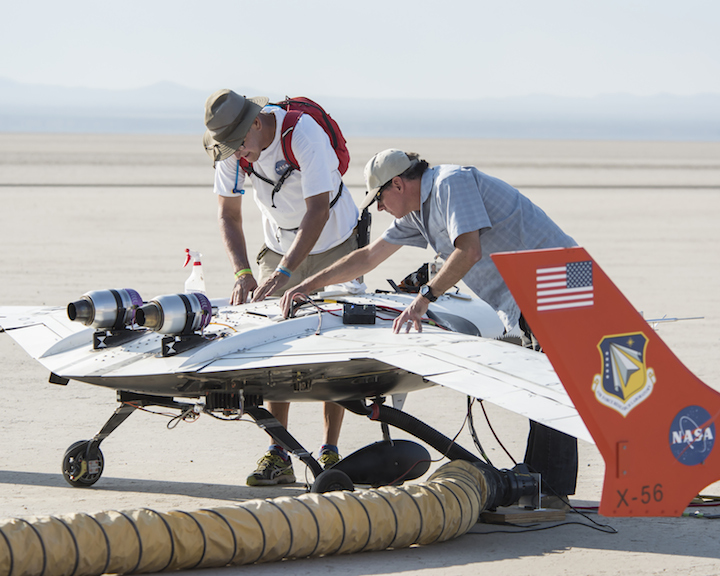22.10.2017

James Smith and Gary Cosentino prepare the X-56A for flight. Researchers are using the aircraft to investigate if highly-flexible, lightweight wings can be controlled.
-
The subscale X-56A is scheduled for a series of research flights in November to prove enabling technology for designing aircraft with highly flexible, lightweight wings. The use of less structurally-rigid wings could be critical to future long-range, fuel-efficient airliners.
A risk reduction flight Aug. 31 from Armstrong demonstrated that past challenges experienced during takeoffs and landings are resolved, said Cheng Moua, X-56A project manager.
To mitigate the down sides of earlier flights, researchers redesigned the landing gear and braking system to improve performance, Moua explained. The flight controller was revised, extensive analysis completed and ground vibration data collected to update theoretical models to improve predictions on how the aircraft will fly.
Long, lightweight flexible wings similar to the ones on the X-56 are crucial to the design of future long-range aircraft and are especially susceptible to a destructive vibration known as flutter at lower speeds. If those vibrations are not alleviated, they could cause controllability challenges or potentially compromise the aircraft’s structure.
Flutter hasn’t been restrained before on an aircraft like the X-56, Moua said. Flutter suppression could lead to improved ride quality, efficiency, safety and the longevity of flexible aircraft structures, he added.

“We want to show that this kind of wing can be built and the control technology exists to suppress flutter on them,” Moua said.
The flights will build up slowly as each step is meticulously executed. New techniques will be tested to collect data and make sense of it and a methodology will be developed to confirm flutter was suppressed, he said. Armstrong engineers developed a flight control system and advanced sensors to gather the information required to achieve the project’s goals.
Lockheed Martin developed the small, remotely piloted aircraft for the U.S. Air Force Research Laboratory and transferred the aircraft to Armstrong for flight research. The program is funded through NASA’s Advanced Air Transport Technology project and NASA’s Flight Demonstration Capabilities project.
Quelle: NASA
